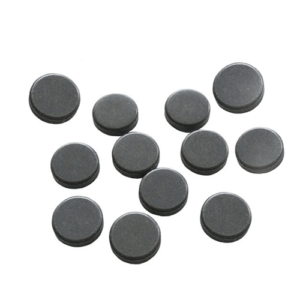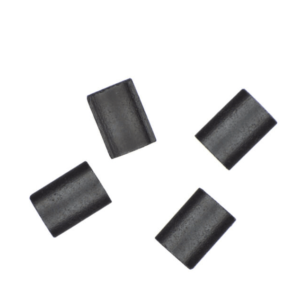Parylene Coating for Magnets
The Parylene coating is a type of thin, conformal polymer coating that we use to protect neodymium magnets, particularly micro magnets for medical applications, as well as a wide range of electronic, medical, and industrial products. Their typical thickness ranges from 100 nanometers to 1 millimeter.
We usually use a chemical vapor deposition process to apply it. Firstly, the process vaporizes the polymer and then deposits it onto the surface of the substrate in a thin, uniform layer.
Parylene has an excellent capacity to adapt to complicated shapes and geometries. This makes it appropriate for a wide range of substrates, which is one of its main advantages. Additionally, it has outstanding electrical insulating qualities and is resistant to moisture, chemicals, and UV light.
In the manufacturing industry, we widely use Parylene coating to protect electronic devices from corrosion, moisture, and mechanical wear, as well as to insulate and protect wire bonds, connectors, and other components. They are also popular in the medical industry for medical devices and implants, thanks to their biocompatibility and their ability to protect against infection.

Basics of Parylene coating
The Parylene coating process is based on a powder, which is placed in the evaporation furnace of the coating equipment, where the solid material is biochemically transformed into a gaseous state under vacuum and at a temperature of 150°C (302°F).
The gaseous material is then cracked into reactive monomers under high temperature 650-700°C pyrolysis (1,202°F – 1,292°F). The gaseous monomers are deposited and polymerized at room temperature at nanoscale, and this deposition method is CVD.
In summary, Parylene coating is widely used in aerospace, microelectronics, semiconductors, sensors, magnetic materials, medical devices, cultural relics protection, and other fields to better enhance protection performance.
Features of Parylene coating
The vapor deposition process for Parylene coating has the unique protective features listed below.

- Good resistance to salt spray, oxidation, and humidity
- No curing heat stress
- No negative influence on magnetic properties
- Near peer, good adaptability to complex shapes
- Can fill micro holes and gaps
- No pinholes and “sand holes” and other coating defects
- Ultra-thin and strong insulation coating: a layer of 5–micron coating can meet the voltage shock of thousands of volts
- Micron-level coating thickness is uniform and controllable
- Greatly save space of magnetic surround line
- It can increase the strength of magnets, suitable for samarium cobalt and other materials
1). Non-porous
Parylene coating is thin polymer films of active small molecules that “grow” on the surfaces of the substrates. They are formed under vacuum conditions, so we can apply them to a variety of shapes, including sharp edges, cracks and internal surfaces.
2). Truly pinhole-free
The Parylene deposition process involves the heating and vaporization of xylene cyclodimers followed by high-temperature cracking into free gas phase molecules, which are instantly adsorbed onto the substrate under vacuum and room temperature conditions to polymerize into a film, forming a very airtight protective film.
Parylene coating do not contain solvents, so they overcome the shortcomings of the solvent-based coating used in the past, which inevitably leave many fine pinholes due to solvent evaporation during the drying process. This feature provides a true pinhole-free protective film.
This feature is very useful for neodymium magnets whose applications have direct contact with various moistures and liquids. One typical example is some kind of countersunk neodymium magnet for sealing within industrial valves. You don’t have to worry about something may leak inside and damage the neodymium magnets.
3). Independent protection points and overall protection
Through experiments, we found that each point of the Parylene coating is an independent protection point. When the coating of a certain spot gets damaged, it will not seriously affect the surrounding areas of the coating. At the same time, the points of the coating layer are connected together through chemical bonding, providing a uniform and enhanced protective performance.
4). Good insulation
In addition to these intrinsic properties Parylene-based coating have good electrical properties, it has good power saving properties – low dielectric loss and high dielectric strength – and it also has excellent mechanical properties with high mechanical strength and low coefficient of friction, the combination of which makes Parylene a suitable insulating layer for small wound components. Parylene’s high dielectric strength and its dry film lubricity make it suitable for this application.
5). Winding window space
The thin and uniform thickness of the Parylene coating allows the winding device to maintain a relatively large winding window, and the large winding space that accompanies this makes it possible to use it as a coated product with better performance. Coated products.
Parylene is also used for components that would be “inclusions” with conventional materials, and for small ferrite transformers and voltages, where, unlike conventional impregnation methods, Parylene does not suffer from the magnetostriction or permeability problems encountered with conventional impregnation.
Winding windows are very important for small movable and stator assemblies, and it is usually difficult to coat bonded nickel-iron laminated assemblies with epoxy or PTFE materials. Because it has a complex shape and coating material will stay in the small winding hole, and also because the coating with very little surface tension stays on the sharp outer corners, it will also cause great friction when winding. Whereas uniform and consistent Parylene retains these small window holes and ensures sufficient coating thickness on the outer corners to provide protection against winding.
6). Ideal coating for micro magnets
Insulating between the winding and the metal component with a tape is a traditional process, however, when the component is very small, the use of tape is difficult. Coating with Parylene can eliminate defective components and improve the electrical properties of the components. A good example is the very small cylindrical core used as a “Pick-Up” coil in some hearing aids.
7). Improved strength and corrosion resistance
Recent developments in magnetic materials have led to the development of sintered and bonded NdFeB components, which can be made in very small shapes and have outstanding advantages using the Parylene coating process. Small NdFeB magnetic devices are fragile, and the addition of Parylene coating has the added advantage of increasing the strength. The NdFeB material is also sensitive to corrosion from moisture in the atmosphere, and the very low water vapor transmission rate of Parylene provides good protection against moisture and corrosion.
Different types of Parylene
Technically speaking, Parylene coating include various types, such as Type N, Type C, Type D, Type F, and Type AF4. They differ in terms of their chemical structure and properties.
1). Perylene N
It is a very good dielectric material with very low dielectric loss, high insulation strength, and a dielectric constant that does not vary with frequency.
It is one of the Parylene coating with high penetration, good self-lubrication, and a coefficient of friction of 0.25. It meets the biological test requirements of ISO-10993 and the biological test requirements of UDP Class VI plastics.
2). Parylene C
This is the 2nd commercially available type of the series. It combines good electrical properties, physical properties, and low permeability to moisture and other corrosive gases. It can provide a true pinhole-free layer of protection.
It is a material for coating critical circuit boards and meets U.S. military standard MIL-46058C. And it also meets ISO-10993 biological test requirements for UDP Class VI plastics.
3). Parylene D
This type is similar to Parylene C, but it has the ability to withstand heat. It still has excellent dielectric properties and physical and mechanical properties at higher temperatures.
4). Parylene F
This type has high dielectric strength, low dielectric constant, and good thermal stability, and also has the ability to resist UV. The film itself is continuous, dense, and pinhole-free. It is an ideal choice as a protective film for various complex-shaped electronic devices.
5). Parylene AF4
This type of Parylene coating has dielectric constant, good stability, and excellent resistance against water, moisture, and salt spray.
It has short-term temperature resistance up to 450°C (842°F) and long-term temperature resistance up to 350°C (662°F), plus strong UV resistance.
It is more suitable as a protective material for high–frequency microwave devices. And it complies with ISO-10993 biological test requirements for UDP Class VI plastics.
Applications of Parylene in medical products
The Parylene coating is not only electrically and electrically protective, but also bio-soluble. It has been validated by the FDA as a biomedical material that can be implanted in the body for long-term use.
Some medical devices have electronic components that need to be carefully protected. These electronic components are tiny and do not have enough weight for sinking, spraying, or painting. Some tiny devices are also adversely affected by air gaps, uneven thickness, etc., so we cannot use traditional protective coating.
Thanks to its excellent anti-oxidant, low hindrance, low friction coefficient, and biocompatibility, Parylene coating gradually replace TiNi (nickel-titanium) coating as the choice for biomedical devices in international clinical applications.
Typical examples include bone nails, probes, needles, temporary surgical instruments, catheters, brakes and cochlear implants, cardiac pacemakers, brain electrodes, implantable sensors, radiofrequency therapies, blood analysis sensors, high–frequency scalpels, and other micro–electronic medical devices.
Compliances of Parylene coating
Parylene coating is widely used in medical device products due to the following properties
- Complies with ISO-10993 biological testing requirements
- Complies with FDA G95-1
- Complies with (ROHS) 2002/95/EC
Below are some examples of medical products that make good use of Parylene coatings, together with a brief introduction to their advantages.
- Cardiac assist devices – Such as pacemakers and precision electronics in electroshock generators, sealed with Parylene against corrosion by biological fluids and protects the metal housing.
- Pressure sensors – Such as blood pressure sensors, where depositing a small amount of Parylene, providing adequate insulation and not significantly altering the operation of these devices.
- Alternative devices – Such as resilient man-made devices, protected with Parylene, eliminating problems associated with microscopic transport and protecting against corrosion by biological fluids.
- Ultrasonic transducers – Microsensors used to observe the lining of blood vessels are protected from corrosion and breakdown with Parylene coating.
- Bone growth stimulator – With Parylene this device can be isolated from biological fluids and human cells can easily grow with the Parylene surface to form a thin layer of tissue of the same structure.